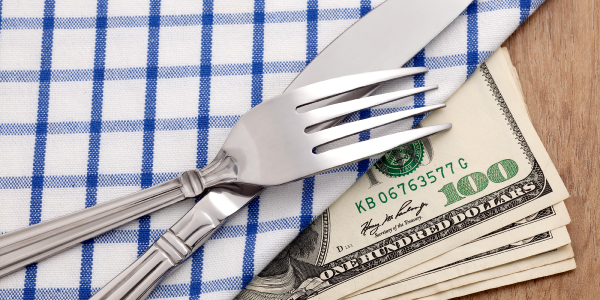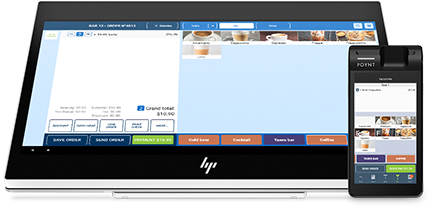
6 Best Ways to Optimize Labor Cost in a Restaurant6 min read
For a financially-sustainable restaurant, the average labor cost is 30 to 35 percent of gross sales. Of this amount, 20 percent usually goes to pay wage-earning staff members like the waiters and about 15 percent goes to staff on salaries like restaurant managers.
Percentages vary on the basis of industry and type of restaurant. Some fast food spots achieve a labor cost of 25 percent or lower. Table service restaurants tend to allocate larger amounts to labor cost.
Reducing the labor cost at a restaurant is dependent on several things.
If you have a restaurant that’s fully booked every single night and you hire four waiters, you’ll definitely have a lower labor cost percentage than having two waiters but only a couple of customers per night. In this instance, the simplest thing to do would be to work towards increasing the number of customers to reduce the labor cost percentage.
When it comes to specific courses of action, here are a few of the best ways to optimize labor cost at your venue.
Deal with a High Attrition Rate
The payment of salaries isn’t the only type of labor cost you’ll incur.
Attrition rate refers to the percentage of staff reduction. These people may leave because they resign or because they retire. No staff replacement occurs.
As a result, the workload increases on the remaining workers, which can be a source of dissatisfaction. These remaining workers could demand bonuses or additional stimuli in order to keep doing their job.
Some of the additional costs related to employees leaving include:
- Recruitment costs
- Onboarding costs
- The cost of training new workers
- Lost working hours
- Reduced productivity among the remaining employees
Ensuring employee engagement and providing the right stimuli are both essential to keep your current employees. The introduction of reward systems makes sense in the long run because it will reduce or eliminate some of the costs mentioned above.
Bring Overtime Down
Overtime can quickly add up to very high labor costs. Every hour of overtime work is paid x1.5 the amount that employees will earn regularly per hour. Thus, extensive shifts can add up to a lot, especially taking in consideration the fact that wages in the U.S. are anticipated to grow in the coming years.

Part-time workers and temporary employees can help you manage the cost of overtime payments. Managers should also have a good idea about the amount of time restaurant workers spend on the job and how quickly they approach the 40 hours per week limit.
There should also be systems in place to reduce or eliminate time theft altogether. Buddy punching is still a serious problem that can be dealt with through the introduction of the right time tracking and productivity systems.
Always Have a Sales Forecast in Mind
Your labor cost as a percentage is heavily dependent on the money that your restaurant makes.
Restaurant scheduling should be dependent on anticipated sales volumes for the respective week. You can create such a schedule on the basis of past data analysis.

The right restaurant POS system can give you a good idea about weekly performance and the number of customers/orders. You can also determine which days are most profitable, basing shifts on this information.
It’s also a good idea to have a labor cost target percentage as a guideline. This information, in combination with projected sales, can help you maintain a manageable labor cost percentage.
Improve Employee Training
Underperforming employees cost your restaurant money. Investing in staff training can help you boost productivity, increase the number of sales and thus reduce the labor cost percentage.
To build a more efficient restaurant team, you can rely on various approaches:
- Make sure everyone is aware of the service steps
- Make sure that everyone knows how to work with the technology available at the venue (POS systems, kitchen display systems, etc.)

- Provide checklists and thorough guidelines for reference purposes
- Ensure regular staff meetings take place on a weekly basis
- Do cross-training sessions to make sure employees are familiar with all aspects of service provisions
- Do staff reviews on a regular basis and provide constructive criticism/feedback
When such measures are in place, processes can be streamlined and productivity will increase. Thorough training also boosts employee engagement and satisfaction, which reduces the risk of a high turnover rate.
Introduce the Right Equipment
Technology is essential to simplify restaurant tasks and increase worker productivity. The right restaurant equipment will empower your staff, whether they interact directly with clients or work in the kitchen. Invest in high-quality kitchen equipment and safety gear.

Automation tools will also come in handy. Automatic billing, online ordering systems and even self-order kiosks that customers can utilize on their own can be quite beneficial in terms of reducing the workload on your staff members.
Tools like kitchen display systems allow for the automatic acceptance of orders from the POS. The need for printing kitchen tickets is completely wiped out, which results in quicker and better processes.
Technology has helped dramatically reduce human effort in the restaurant industry. The good news is that innovative technology is becoming more and more affordable. Take some time to identify the clumsiest processes and consider the technological solutions that will contribute to optimal improvement.
Optimize and Review Schedules
The fact that a certain staffing and scheduling arrangement works right now to reduce labor cost at the restaurant doesn’t mean this plan is always going to be the best one.

To optimize schedules, you’ll need to do the following:
- Start scheduling in advance to benefit from feedback from the employees
- Give staff members the power to do swaps and schedule optimizations on their own (but make sure everybody knows changes will have to go through you for approval)
- Give everyone a chance to work the most profitable shifts every now and then
- Always schedule the busy shifts first
- Avoid giving people back-to-back shifts
- Make sure that an appropriate number of staff members is scheduled for each shift (depending on analytics forecasts)
- Make sure that your employees have enough time to rest
Having at least one manager to help you through the process and oversee the optimization of the work schedule is also going to be essential for the introduction of much-needed revisions over time.
Restaurant labor costs can add up to a serious expenditure in the absence of a strategic optimization plan. It’s imperative to take a proactive approach.
You have a ton of information you can rely on to make the right staffing and scheduling decisions for your restaurant. A few simple tech solutions can give you a comprehensive idea about orders, employee performance, revenue and productivity issues. The very same technology will give your workers the tools they need to simplify their job and process a larger number of customer orders.
If you still make labor cost decisions on the basis of estimates rather than intelligent forecasts, you’re missing on a major improvement area.
Maintaining profit margins is all about understanding your restaurant’s operations and weaknesses. When margins are reduced, you may turn to desperate measures that will result in a vicious cycle. Instead, opt for preemptive measures like proper staff training and data-based scheduling. You’ll quickly experience the benefits that such measures bring to t



